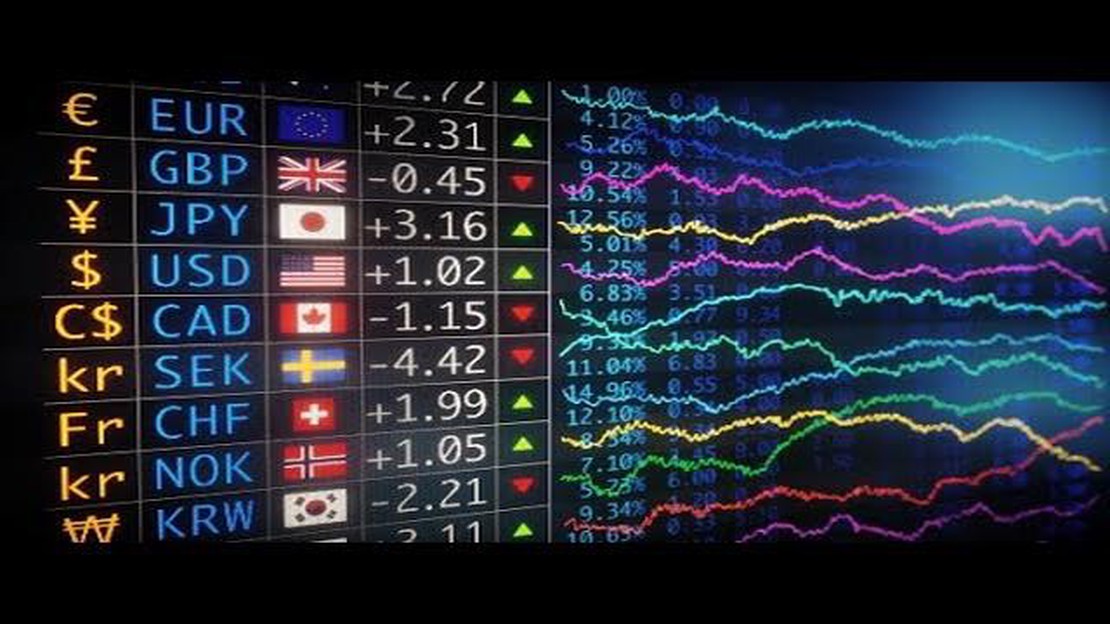Introduction to Salt Tolerant Varieties of Alfalfa: Exploring Resilient Options
Types of salt tolerant variety of alfalfa Alfalfa, also known as lucerne, is a highly valuable forage crop that is widely cultivated around the world. …
Read Article
The market rate of exchange, also known as the foreign exchange rate or forex rate, is a crucial factor in determining the value of one currency in relation to another. It plays a vital role in global trade and investment, affecting import and export prices, foreign investment, and the overall economic health of countries.
There are several key factors that influence the market rate of exchange. One of the most significant factors is supply and demand. When there is a high demand for a particular currency, its value increases relative to other currencies. Conversely, when there is a high supply of a currency and a low demand, its value decreases. This supply and demand dynamic is driven by various factors such as economic indicators, political stability, interest rates, and market sentiment.
Political stability and economic indicators are also crucial components that impact the market rate of exchange. Countries with stable political systems and strong economic fundamentals tend to have more stable currencies. Conversely, countries with political instability or economic uncertainties may experience fluctuating exchange rates. Economic indicators such as GDP growth, inflation rates, unemployment rates, and trade balances play a significant role in investors’ perception of a country’s economic health and, subsequently, the valuation of its currency.
Furthermore, interest rates and market sentiment can have a significant impact on the market rate of exchange. Central banks make decisions regarding interest rates, which can attract or deter foreign investors. Higher interest rates generally attract foreign investors, as they can earn higher returns on their investments. This increased demand for the currency can drive up its value. On the other hand, market sentiment, driven by factors such as geopolitical events and investor confidence, can lead to sudden fluctuations in exchange rates.
Overall, understanding the market rate of exchange and its key factors is essential for businesses, investors, and policymakers. It allows them to make informed decisions regarding international trade, investment, and monetary policy. By closely monitoring these factors and their impact on exchange rates, individuals and organizations can mitigate risks and take advantage of opportunities in the global marketplace.
The market rate of exchange refers to the value at which one country’s currency can be exchanged for another country’s currency. Understanding the market rate of exchange is crucial for individuals and businesses involved in international trade and investing, as it can greatly impact financial transactions and cross-border transactions.
There are several key factors that can influence the market rate of exchange:
It is important to note that the market rate of exchange is highly volatile and can fluctuate throughout the day due to various factors. Traders and investors need to closely monitor these factors and stay informed about global economic and political developments to make informed decisions in the foreign exchange market.
Read Also: Understanding BMS: The Key to Mastering Forex Trading
Exchange rates play a crucial role in the global economy and can have a significant impact on international trade, investments, and tourism. There are several key factors that influence exchange rates, including:
These are some of the key factors that can influence exchange rates. It is important for businesses, investors, and individuals to closely monitor these factors and their impact on exchange rates to make informed decisions in international transactions.
Read Also: How Long Should I Hold ESPP Shares? | Expert Advice for Maximizing Gains
The market rate of exchange refers to the value of one currency in terms of another currency in the foreign exchange market. It is determined by supply and demand factors, and it can fluctuate constantly.
There are several key factors that influence the market rate of exchange. These include interest rates, inflation, political stability, economic indicators, government interventions, and market speculations.
Interest rates can have a significant impact on the market rate of exchange. When a country’s interest rates are higher, it attracts foreign investors who want to take advantage of the higher returns. This increases the demand for the country’s currency and can cause its value to appreciate.
Government interventions can play a role in determining the market rate of exchange. Governments can buy or sell their own currency in the foreign exchange market to influence its value. For example, a government may intervene to prevent its currency from appreciating too much, as this could negatively affect its exports.
Market speculation can have a significant impact on the market rate of exchange. Traders and investors who speculate on future currency movements can cause short-term fluctuations in the exchange rate. For example, if speculators believe that a currency will weaken in the future, they may sell it, causing its value to decline.
The market rate of exchange is the rate at which one currency can be exchanged for another on the open market. It is determined by supply and demand factors and can fluctuate throughout the day.
Types of salt tolerant variety of alfalfa Alfalfa, also known as lucerne, is a highly valuable forage crop that is widely cultivated around the world. …
Read ArticleUnderstanding Buy and Sell in Exchange Rate When it comes to international travel or conducting business in a different currency, understanding …
Read ArticleAre Forex Taxes Racking Up Your Bills? Forex trading has become increasingly popular in recent years, with more and more individuals trying their hand …
Read ArticleUnderstanding Forex Trading: What You Need to Know Welcome to the world of forex trading! Whether you’re a seasoned investor or a beginner looking to …
Read ArticleHow to become a trader in Ireland Trading is a challenging yet potentially rewarding venture. If you’re interested in becoming a trader in Ireland, …
Read ArticleBenefits and drawbacks of high volatility in forex trading When it comes to forex trading, volatility is a word that carries a lot of weight. For some …
Read Article